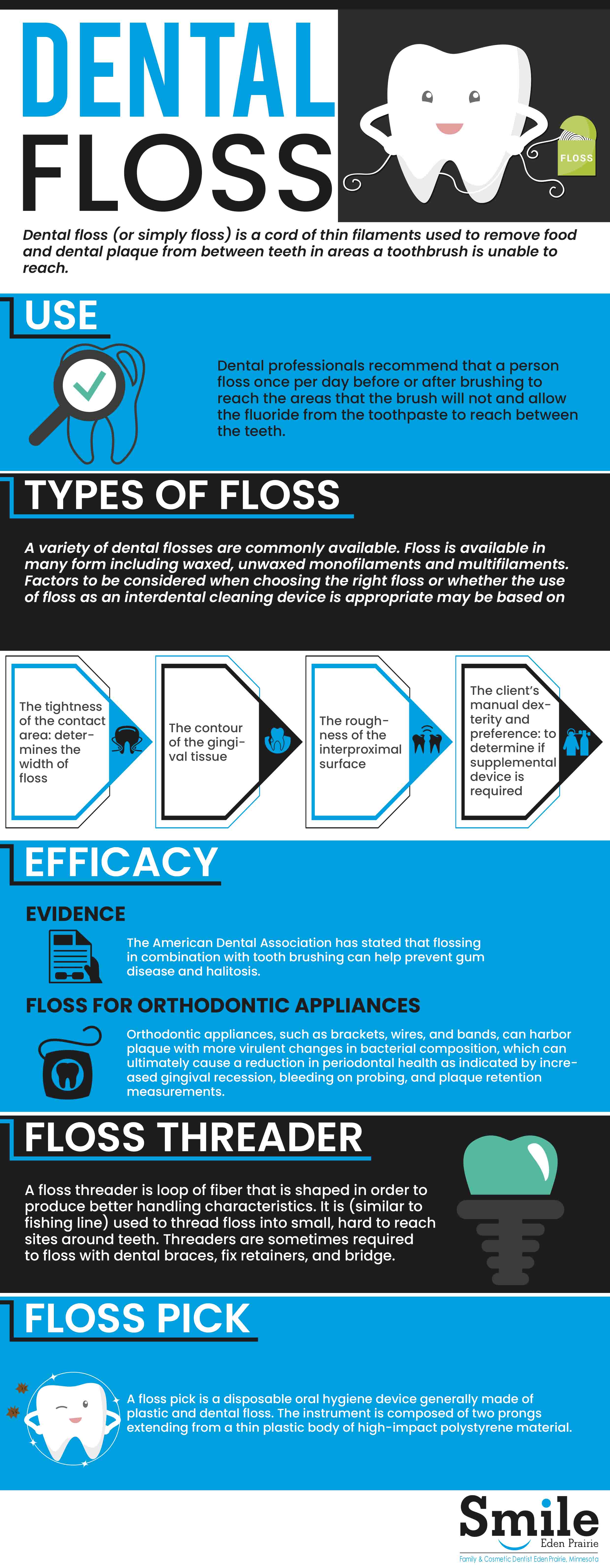General Dentistry Concepts: Floss
Dental floss consists of a cord of thin filaments which is used to remove food and dental plaque from in between teeth or areas where a toothbrush cannot reach.
The use of floss is commonly recommended as part of good dental hygiene at home. The American Dental Association (ADA) states that up to 80% of plaque can be removed with regular flossing. Floss is especially beneficial for individuals who are undergoing orthodontic treatment.
History
Levi Spear Parmly was a dentist from New Orleans who is credited with the invention of floss. In 1819, he recommended running a waxy silk thread through the teeth in order to dislodge food particles that can cause disease. Parmly considered flossing to be the most important aspect of oral care. Floss was not available commercially until 1882. Codman and Shurtleft was the first company to produce unwaxed silk floss. Johnson & Johnson Corporation received the first patent for dental floss in 1898. Their patent was for floss made from the same silk material used by doctors for silk stitches.
One of the earliest depictions of floss found in literary fiction is in the novel Ulysses by James Joyce. The adoption of the general public to floss was low prior to World War II. During the war, the physician Charles C. Bass developed nylon floss. Nylon floss proved to be better than silk because of is stronger and can be produced in great lengths and at various sizes.
In the 1970s, floss became part of daily personal care routines for Americans.
Dental professionals recommend flossing once daily before or after brushing. Flossing can help patients reach areas that the brush cannot access. Flossing also allows the fluoride from the toothpaste to reach between the teeth. Floss is often dispensed in plastic containers that hold 10 to 100 meters of floss.
After pulling out the desired amount of floss, the user can pull it against a blade located within the dispenser to cut it off. The user then holds the floss between their fingers using both hands with a few centimeters of floss exposed. The user guides the floss between all the teeth, gently curving it against the edge of the tooth in a 'C' shape pattern and sliding it under the gumline. This removes small particles of food which get stuck between teeth in addition to dental plaque that adheres to tooth’s surface below the gumline.
Types of floss
There are a variety of different dental flosses readily available. Floss is often available the following forms: waxed, unwaxed monofilaments and multifilaments. Dental floss made of monofilaments is coated in wax and slides easily between teeth. Waxed floss does not easily fray and generally costs more than other types of floss. The most important aspect of different varieties of dental flosses is the thickness. Waxed and unwaxed floss are both available in a variety of widths. Studies have proven that there is no difference in the effectiveness of waxed floss compared to unwaxed floss. Some waxed dental flosses contain antibacterial agents and/or sodium fluoride. Factors which patients should consider when choosing a floss include the amount of space between their teeth and their personal preference. Dental tape is another type of floss product. Dental tape is wider and flatter compared to traditional floss. Dental tape is recommended for patients who have a larger tooth surface area.

